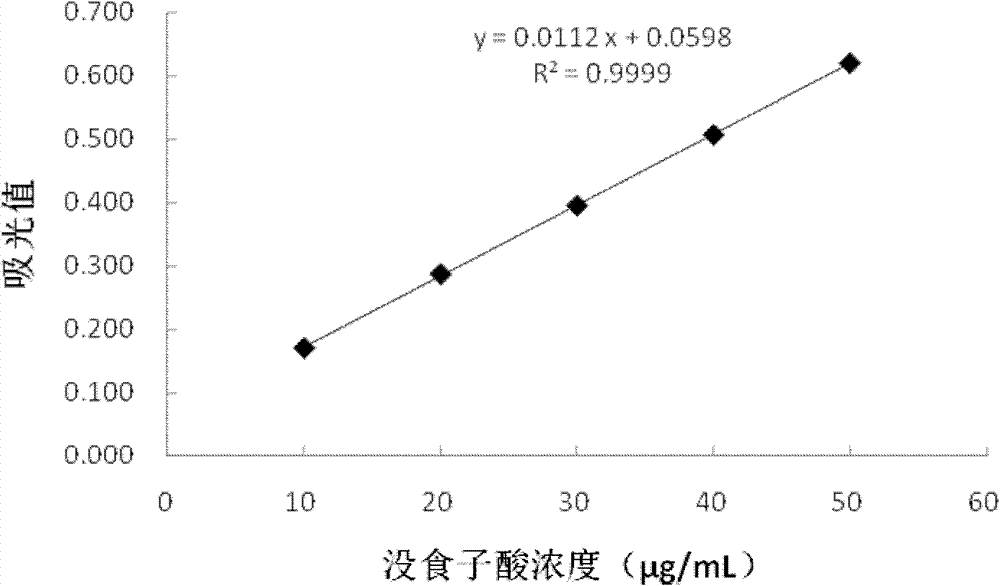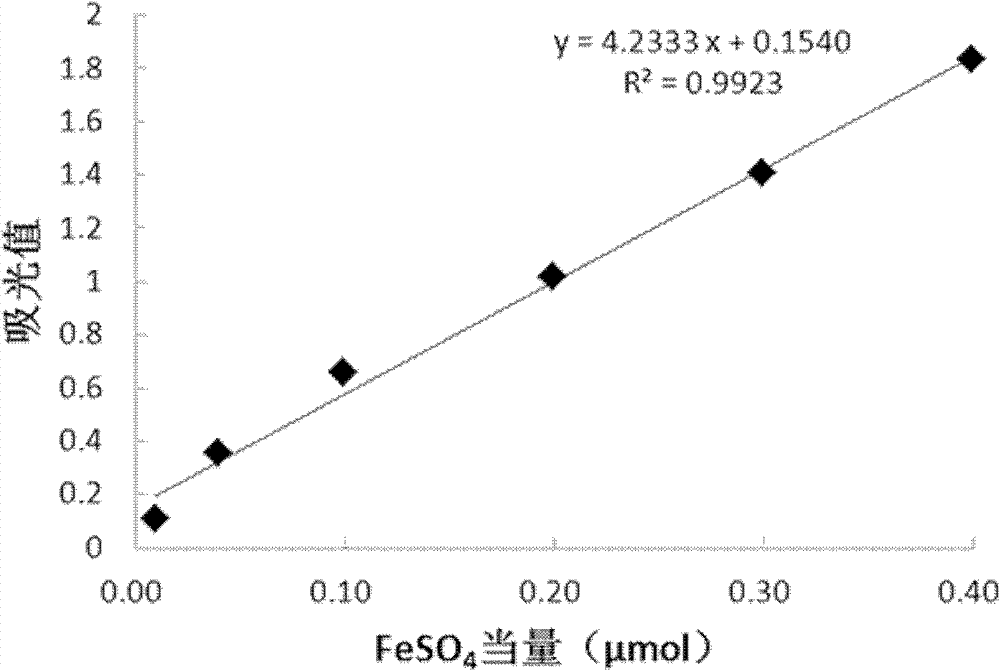Method for extracting polyphenol from Calophyllum Inophyllum L
A technology of sea red fruit and red fruit, applied in the field of polyphenol extraction, to achieve the effect of simple process, easy industrial production, and enhanced antioxidant activity
- Summary
- Abstract
- Description
- Claims
- Application Information
AI Technical Summary
Problems solved by technology
Method used
Image
Examples
Embodiment 1
[0042] The sea red fruit was pitted and beaten, 40g of sea red fruit pulp was weighed, and 400 mL of 60% ethanol aqueous solution was added, mixed, and leached in a water bath at 80°C for 3 hours, cooled to room temperature, filtered, and the residue was extracted by repeating the above steps once . The two extracts were combined and concentrated to 1 / 4 of the original volume at 45°C and a vacuum of 0.1 MPa. The concentrated solution was pumped into the balanced NKA-9 macroporous resin column (produced by Beijing Kebao Biotech Co., Ltd.) at a flow rate of 1 mL / min. First rinse the column with 5 times the column volume of distilled water, then use 3 times the column volume of 60% ethanol aqueous solution to elute at a flow rate of 2 mL / min, collect the eluate of 60% ethanol aqueous solution, and depressurize at 45°C and 0.1 MPa concentrate. The concentrated solution was freeze-dried at -60°C and 20 Pa to obtain 0.35 g of pink sea red fruit polyphenol powder, in which the polyp...
Embodiment 2
[0048] The sea red fruit is pitted and beaten, 40g sea red fruit pulp is weighed, and 500 mL of 50% ethanol aqueous solution is added, mixed, and then leached in a 75℃ water bath for 5 hours, cooled to room temperature, filtered, and the residue is extracted once by repeating the above steps . The two extracts were combined, concentrated at 45°C and a vacuum of 0.1 MPa to remove ethanol, and the polyphenol aqueous solution was pumped into the balanced NKA-9 macroporous resin column at a flow rate of 2 mL / min. First rinse the column with 5 times the column volume of distilled water, then use 3 times the column volume of 60% ethanol aqueous solution at a flow rate of 2mL / min, collect the 60% ethanol eluate, concentrate under reduced pressure at 45℃, 0.1MPa, and concentrate The liquid was freeze-dried to obtain 0.33 g of pink sea red fruit polyphenol powder, in which the polyphenol purity was 78% and the FRAP value was 20.03.
Embodiment 3
[0050] The sea red fruit is pitted and beaten, 40g of sea red fruit pulp is weighed, and 600 mL of 50% ethanol aqueous solution is added, mixed, and then leached in a water bath at 85°C for 2 hours, cooled to room temperature, filtered, and the residue is extracted once the above steps . The two extracts were combined, concentrated at 45°C and a vacuum of 0.1 MPa to remove ethanol, and the polyphenol aqueous solution was pumped into the balanced NKA-9 macroporous resin column at a flow rate of 2 mL / min. First rinse the column with 5 times the column volume of distilled water, then use 2 times the column volume of 50% ethanol aqueous solution at a flow rate of 2mL / min, collect the 50% ethanol eluate, concentrate under reduced pressure at 45℃, 0.1MPa, and concentrate The liquid was freeze-dried to obtain 0.30 g of pink sea red fruit polyphenol powder, in which the polyphenol purity was 80% and the FRAP value was 20.51.
PUM
 Login to View More
Login to View More Abstract
Description
Claims
Application Information
 Login to View More
Login to View More - Generate Ideas
- Intellectual Property
- Life Sciences
- Materials
- Tech Scout
- Unparalleled Data Quality
- Higher Quality Content
- 60% Fewer Hallucinations
Browse by: Latest US Patents, China's latest patents, Technical Efficacy Thesaurus, Application Domain, Technology Topic, Popular Technical Reports.
© 2025 PatSnap. All rights reserved.Legal|Privacy policy|Modern Slavery Act Transparency Statement|Sitemap|About US| Contact US: help@patsnap.com


